What does BA Euroflyer and BA CityFlyer’s CEO have to say about the state of the industry?
Links on Head for Points may support the site by paying a commission. See here for all partner links.
On Tuesday, we attended one of the regular Aviation Club UK lunches to hear Tom Stoddart speak.
(The Aviation Club UK always gets top speakers for its lunches. Recent guests include Qatar Airways CEO Akbar Al Baker, Delta CEO Ed Bastian, Virgin Atlantic CEO Shai Weiss and outgoing Heathrow CEO John Holland-Kaye. It is well worth becoming a member if you are involved in the industry.)
Tom, who holds a pilots licence and still flies for British Airways from time to time (yes, the airline CEO may be flying your aircraft!) is the CEO of both BA CityFlyer and BA Euroflyer.
Euroflyer is CityFlyer’s younger sibling, tasked with re-launching short haul flights at Gatwick following the pandemic. In his speech, Tom spoke about CityFlyer’s history (and future), starting BA Euroflyer from scratch and the Air Traffic Control disruption we’ve seen this summer.
We thought it was worth reproducing some of his speech and Q&A here. We have made edits for clarity and context, and transcription errors may have crept in, so the text below should not be seen as perfect word for word quotes.
BA CityFlyer’s niche
“BA once had regional airline called BA Connect. It had previously existed in various forms such as Brymon Airways, British Regional Airlines, British Airways CitiExpress and via franchisee Manx Airlines.
In 2006 a chap called Willie [Walsh], some of you may have heard of him, arrived at BA and decided that we should sell BA Connect to Flybe, the reason being a lack of profitability. At the time, BA felt that London’s City business was still worth retaining so CityFlyer was formed using a fleet of RJ100s. CityFlyer flew its first flight on the 25th of March 2007, and since then has carried 24 million customers and flown nearly half a million flights.”
The current CityFlyer fleet comprises 20 Embraer E190SRs, down from a pre-pandemic peak of 24. The SR stands for ‘Special Requirement’ and pertains to the particular union demands at Britsih Airways:
“Within BA we have something called a scope agreement. This limits which pilots can fly an aircraft and, at that time, the agreement with the British Airways trade unions was that only aircraft of less than 100 seats, and that was certified seats, could be flown by non-mainline pilots.
It wasn’t enough to simply remove the seats; you actually had to have the aircraft re-certified [as having under 100 seats]. We worked with Embraer to have the aircraft certified as an Embraer E190SR, hence we were able to operate it within the CityFlyer fleet.
The Embraer is great aircraft. It copes with a narrow runway and steep approach at London City very well. It enables us to serve some unique and operationally challenging airports such as San Sebastian, Chambery and Florence.”
At some point, however, the E190 fleet will need to be replaced, although by the sounds of it there are no plans to do so at present. In particular, it appears that BA CityFlyer wants to take a ‘wait and see’ approach to London City Airport’s current expansion plans, as they could seriously effect any future prospects at the airport.
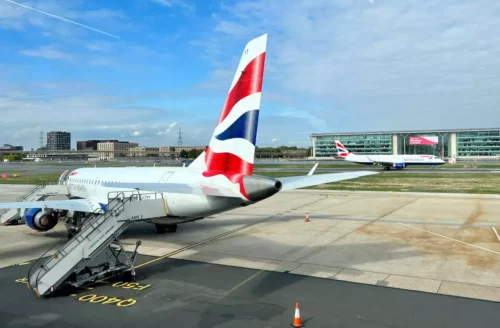
“There can’t be many airlines that are unable to access a home base for 24 hours every weekend. And we consider the proposals by London City balanced and proportionate ….. Increased utilisation associated with adjusted opening hours is critical to making an investment case .
The challenge for us as a business is that the moment you move to new generation aircraft, your cost of ownership increases quite significantly. Yes, you get the additional gauge, but you need to be confident that you’re going to fill those seats. I think the London City Airport planning application is really key.
We sit at about six and a half to seven hours worth of aircraft utilisation within it which isn’t terrible for a regional outfit, but if we were flying over the weekends, you would see that number increased quite significantly. It really helps the investment case for the new generation aircraft. I think we need to see how the market recovers over the next couple of years before we make that decision but at some point new generation aircraft will feature as part of the plans for CityFlyer.”
Tom cites the changing split between business and leisure travel, which now sits at 60% business and 40% leisure rather than the 70/30 split before pandemic, as a key reason why weekend operations would be hugely beneficial.
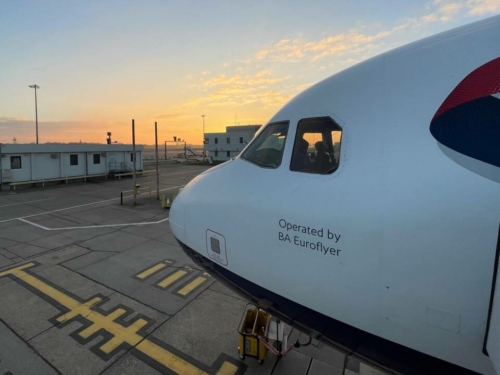
How (and why) BA Euroflyer was started
Euroflyer is a completely different story having been built from scratch rather than as the result of legacy airlines. It is also much younger, having operated for less than 18 months.
“BA has never really made money shorthaul at Gatwick, with only one year in the last 15 delivering profits. The Gatwick leisure market is ruthless with fiercely competed yields requiring razor sharp attention to cost, something BA simply wasn’t equipped to do under the previous management structure. That meant it was difficult for BA to ever make a profit out of short haul at Gatwick.
The question was, armed with a blank piece of paper, could we find a way to make Gatwick work for BA? Inspired by the success and autonomy of CityFlyer and Iberia Express, we formed a plan to create a new entity that would operate independently, with its own AOC and its own management team. That allows British Airways, via Euroflyer, to compete with low cost carriers at Gatwick whilst still delivering the very best of BA service and quality. Our Club product in particular means we offer something unique at Gatwick and there is clearly demand for a full service carrier.
The decision was taken in December 2021 and flights were put on sale a few days later, operating our first flight on the 29th March, less than four months after the decision to return was taken. I don’t know if anybody’s ever set up an AOC or set up an airline, but to go from taking a decision to invest in a market to operating in four months, it’s frankly remarkable.
In Summer 2022 we flew to 35 destinations, and by September 2022, less than six months after we started flying, we’d carried over a million customers. As of last week, the Euroflyer business had operated 28,000 flights and carried 3.7 million customers.
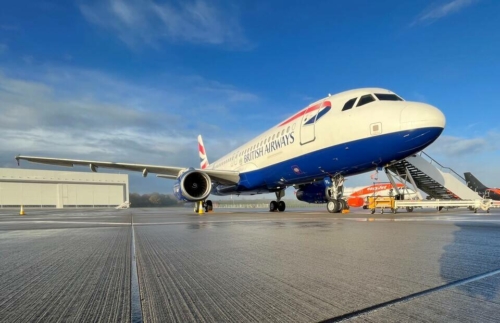
Why air fares are likely to remain high(er)
“There is no question that airlines airports and ground handlers were better prepared for this summer than the last. Everybody recruited hard, everybody built in more buffers and collectively we did a good job getting ready. But it’s still been a difficult summer …. Yes, capacity has increased since last summer, with all airports operating more services this summer than last, but 2023 movements were still well below 2019 when our collective punctuality was higher.
In the first week of September, Heathrow’s on time performance (at a 15 minute departure level) was 55%. Amsterdam 53%. Charles de Gaulle (Paris) and Frankfurt at 44%. Bottom of the pile is Gatwick, at 32%. I should probably add that London City is leading London at 67%. Across all airports, it’s clear that there is work to do.
Air traffic control issues have played a significant part in this story. The first wave of flights in the morning is crucial to an airline’s punctuality. Get the first wave out on time and chances are things will run smoothly for the rest of the day. At Gatwick and City we’re pretty good at getting things ready in the morning. Most mornings, the majority of the flights will be ready on time, eager to get underway, but then we wait. We wait for the inevitable air traffic control delays that have become all too common post covid. Slot of delays of 30 minutes or more are quite common, a magnitude of delay which you simply can’t recover during the remainder of the day.
The first six months of 2023 saw a 93% increase in ATC delay minutes versus the same period in 2022. On one single day earlier this year BA saw 124 separate air traffic control restrictions, military airspace closures, capacity reductions due to staff shortages, daily events across Europe and more disrupting customers, delaying aircraft and increasing carbon emissions. Regrettably, we see no sign of this improving.
We’re now building schedules for future seasons based upon what appears to be the new normal, building additional resilience into our operations. We shouldn’t have to do this. Governments have to realise that UK and European airspace reform is long overdue and is required now.”
Unfortunately, continued restrictions on air traffic slots will lead to increased fares as airlines build in more redundancy across their networks to mitigate any unexpected problems:
“Only yesterday, I was meeting with the CEO of Gatwick Airport talking about what this means for us next summer. And in reality, our customer promise has to be more ambitious than the current on-time performance for departures, it has to be better than that. As we can’t fix the European air traffic control system ourselves, regrettably, what we can do is influence how we build up schedules, we can put fire breaks into the schedules, we can reduce aircraft utilisation, but all of those things come at a cost. We will invest, we will do the right thing to protect the customer promise: we have to. But ultimately, that does lead to more cost, as does disruption.”
PS. If you are not a regular Head for Points visitor, why not sign up for our FREE weekly or daily newsletters? They are full of the latest Avios, airline, hotel and credit card points news and will help you travel better. To join our 70,000 free subscribers, click the button below or visit this page of the site to find out more. Thank you.

How to earn Avios from UK credit cards (July 2025)
As a reminder, there are various ways of earning Avios points from UK credit cards. Many cards also have generous sign-up bonuses!
In February 2022, Barclaycard launched two exciting new Barclaycard Avios Mastercard cards with a bonus of up to 25,000 Avios. You can apply here.
You qualify for the bonus on these cards even if you have a British Airways American Express card:
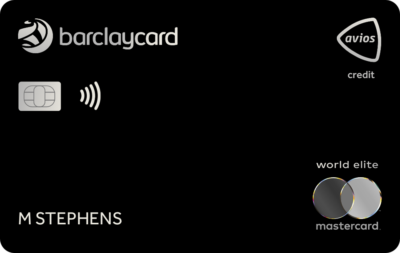
Barclaycard Avios Plus Mastercard
Get 25,000 Avios for signing up and an upgrade voucher at £10,000 Read our full review

Barclaycard Avios Mastercard
Get 5,000 Avios for signing up and an upgrade voucher at £20,000 Read our full review
There are two official British Airways American Express cards with attractive sign-up bonuses:
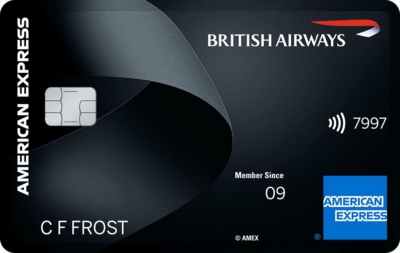
British Airways American Express Premium Plus Card
30,000 Avios and the famous annual Companion Voucher voucher Read our full review
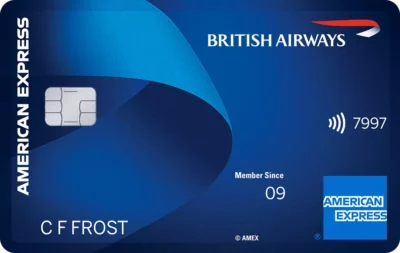
British Airways American Express Credit Card
5,000 Avios for signing up and an Economy 2-4-1 voucher for spending £15,000 Read our full review
You can also get generous sign-up bonuses by applying for American Express cards which earn Membership Rewards points. These points convert at 1:1 into Avios.

American Express Preferred Rewards Gold Credit Card
Your best beginner’s card – 20,000 points, FREE for a year & four airport lounge passes Read our full review

The Platinum Card from American Express
50,000 bonus points and great travel benefits – for a large fee Read our full review
Run your own business?
We recommend Capital on Tap for limited companies. You earn points worth 0.8 Avios per £1 on the FREE standard card and 1 Avios per £1 on the Pro card. Capital on Tap cards also have no FX fees.

Capital on Tap Visa
NO annual fee, NO FX fees and points worth 0.8 Avios per £1 Read our full review

Capital on Tap Pro Visa
10,500 points (=10,500 Avios) plus good benefits Read our full review
There is also a British Airways American Express card for small businesses:
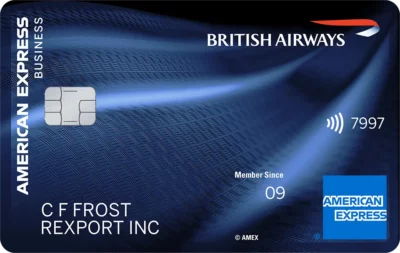
British Airways American Express Accelerating Business Card
30,000 Avios sign-up bonus – plus annual bonuses of up to 30,000 Avios Read our full review
There are also generous bonuses on the two American Express Business cards, with the points converting at 1:1 into Avios. These cards are open to sole traders as well as limited companies.

The American Express Business Platinum Card
50,000 points when you sign-up and an annual £200 Amex Travel credit Read our full review

The American Express Business Gold Card
20,000 points sign-up bonus and FREE for a year Read our full review
Click here to read our detailed summary of all UK credit cards which earn Avios. This includes both personal and small business cards.




 Rhys
Rhys 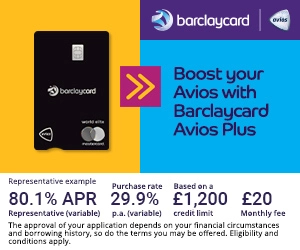





Comments (105)